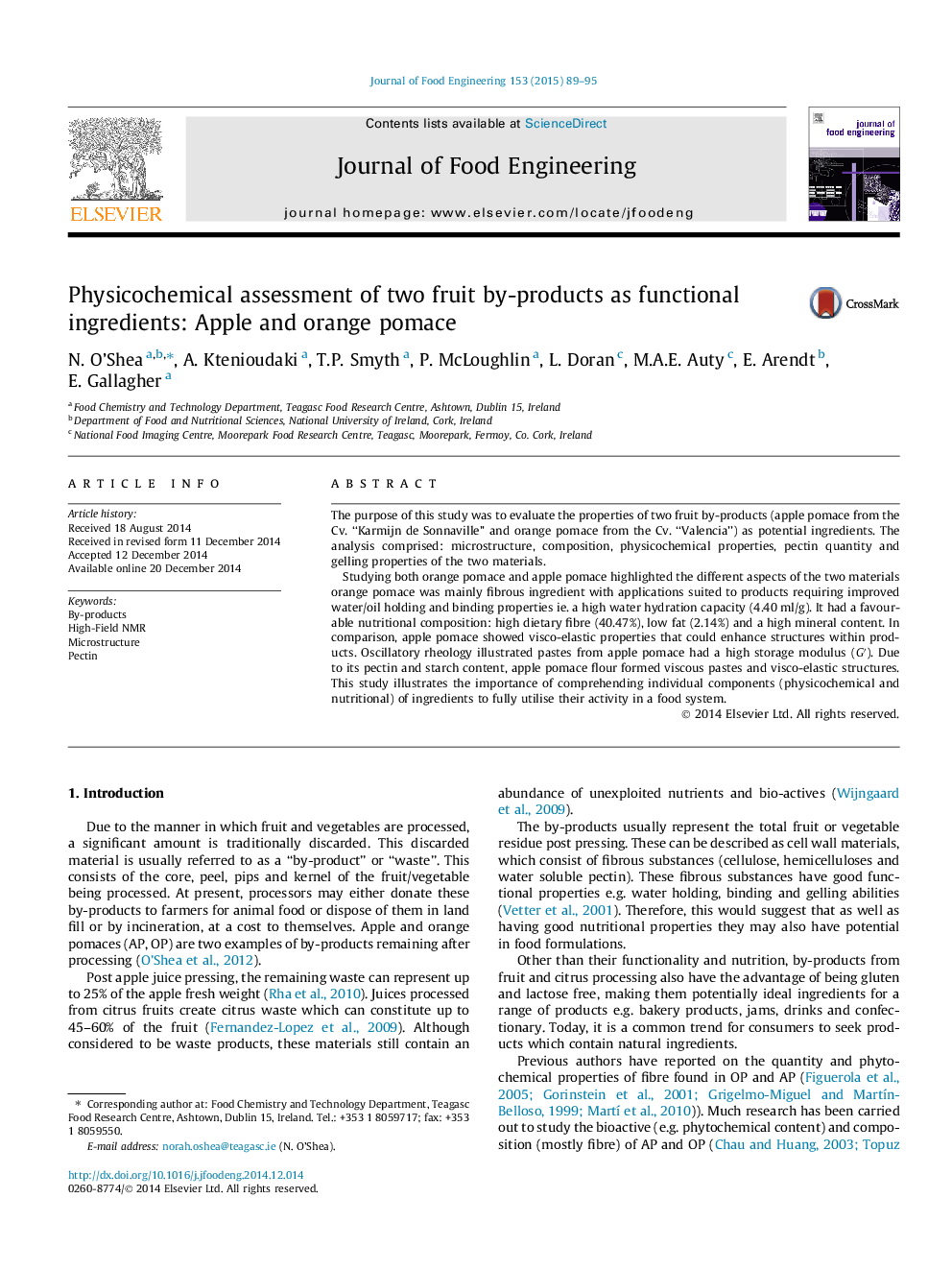| Article ID | Journal | Published Year | Pages | File Type |
|---|---|---|---|---|
| 222888 | Journal of Food Engineering | 2015 | 7 Pages |
•Two by-products from the food industry were studied: apple (AP), orange pomace (OP)•By-products were analysed for their compositional and functional properties•OP flour had a high water hydration capacity of 4.40 ml/g, compared to AP (3.47 ml/g)•A pectin content of 7.36% was found in AP, compared to OP (16.69%)•AP pectin at 3 hours post-extraction had a degree of methylation of 56%, (OP was 53%)
The purpose of this study was to evaluate the properties of two fruit by-products (apple pomace from the Cv. “Karmijn de Sonnaville” and orange pomace from the Cv. “Valencia”) as potential ingredients. The analysis comprised: microstructure, composition, physicochemical properties, pectin quantity and gelling properties of the two materials.Studying both orange pomace and apple pomace highlighted the different aspects of the two materials orange pomace was mainly fibrous ingredient with applications suited to products requiring improved water/oil holding and binding properties ie. a high water hydration capacity (4.40 ml/g). It had a favourable nutritional composition: high dietary fibre (40.47%), low fat (2.14%) and a high mineral content. In comparison, apple pomace showed visco-elastic properties that could enhance structures within products. Oscillatory rheology illustrated pastes from apple pomace had a high storage modulus (G′). Due to its pectin and starch content, apple pomace flour formed viscous pastes and visco-elastic structures. This study illustrates the importance of comprehending individual components (physicochemical and nutritional) of ingredients to fully utilise their activity in a food system.
